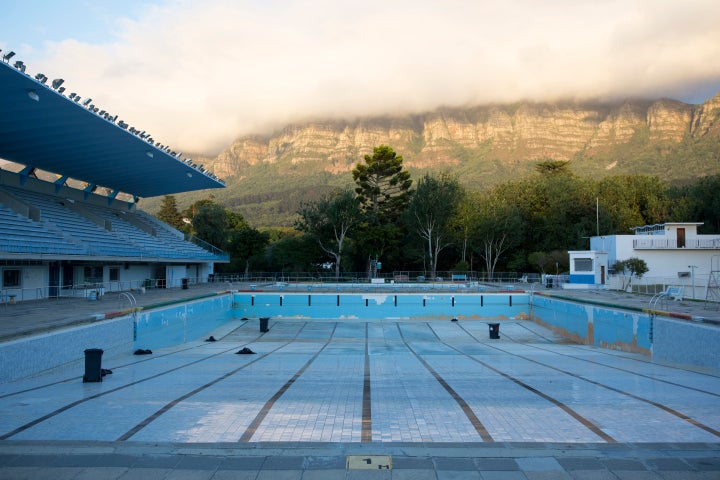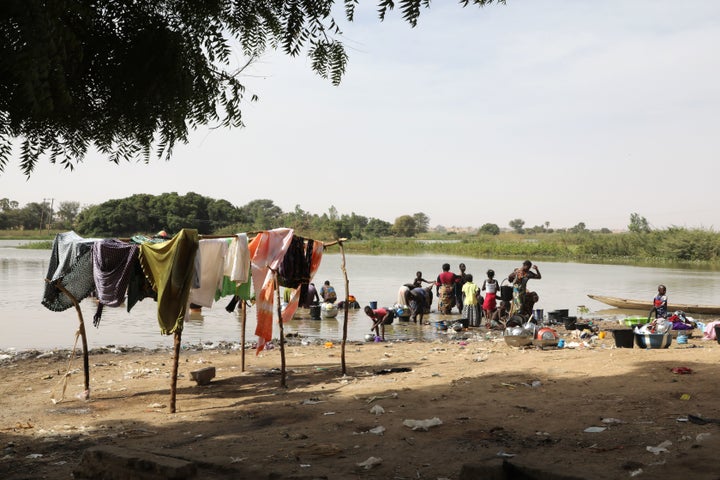
Earlier this year, the world was shocked at the prospect of beautiful, green Cape Town with empty swimming pools, dry brown lawns and long queues at standpipes as it ran out of water.
The news that the coastal South African city may have averted Day Zero through careful water conservation and reprioritisation doesn’t change the wakeup call for the rest of us – nor does it change that on this World Water Day, 22 March, there are millions of other people who already face that daily struggle for water.
There are nearly 850million people in the world without clean water close to home, and with 60% of the world’s population living in water-stressed areas where demand exceeds supply, that number is likely to rise.
As WaterAid’s The Water Gap: State of the World’s Water 2018 reveals, it’s the vulnerable in society that suffer most. And virtually everywhere in the world, there is a gap in access to water between the wealthiest and the poorest.
We’ve found that countries like Uganda and Ethiopia now rank among the lowest countries for access in the world, in part because of the sheer distance required for many people to go in search of clean water. For the first time, the Unicef-WHO joint monitoring programme now includes distance as a measure of access, because if you have to walk more than 30 minutes round-trip to get water, you don’t really have access at all.
The vulnerable suffer most
If drought and overuse can bring the water supply of a relatively wealthy community with modern infrastructure to its knees, then imagine what this means for other communities around the world where infrastructure is shaky or non-existent, and where cities are growing faster and more chaotically than planners can absorb new arrivals. And then, in turn, what does that mean for those who are already hardest to reach: because of disability, or old age; caste or ethnicity; remote or unplanned locations, or displacement.
These people are already on the fringes of society, struggling to eke out a living; when precious resources are scarce, they are the first to lose what little they have gained. Climate change will only exacerbate this effect. When the dry season is longer and drier, when the rains are fiercer and more unpredictable and when devastating floods hit more often, those in the global south who have contributed least to climate change in the form of emissions are most likely to lose everything, and least able to recover.

This World Water Day we have also thrown a spotlight on a remote community in Niger. Located on an island in the Niger River, in the region of Tillabéri near the Malian border, the community of Norandé is a microcosm of virtually every challenge that exists for access to water: a remote, rural community, without basic infrastructure or a local government and tax base to support one, faced with alternating drought and flooding which wipes out crops and livestock, in an area prone to attack from militant groups, and sitting on a badly polluted river which carries disease in its waters.
So much more to do
WaterAid’s work has helped safeguard a basic drinking water supply and provided hygiene promotion and latrines, making the community healthier and enabling girls to stay in school longer. But there is so much work still to do to ensure this community is able to progress and thrive.
Water is vital for life, of course, but it is much more than that. Having a reliable, sufficient supply means staying cleaner and healthier, the provision of better health care, better quality education and a path to increased productivity and prosperity. It is a United Nations-recognised human right. As a society we talk about trying to end extreme poverty, eradicate diseases like polio and malaria, and reduce child illness and mortality. Absolutely none of these can be accomplished without access to clean water, alongside decent sanitation and hygiene.
This July, world leaders will gather in New York at the High-Level Political Forum to review countries’ progress on the UN Global Goal 6 – to provide access to water and sanitation to everyone, everywhere by 2030. With just 12 years left, the task is enormous and time is short. It is possible to achieve this incredible change, but not without a step change in approach.
We need to give the water crisis the focus and urgency that it deserves. That means ensuring more and better-spent financing for water, sanitation and hygiene programmes, supporting, strengthening and training governments and municipal utilities and their technicians to deliver efficient, effective, sustainable services, and for ensuring everyone – even the poorest and most marginalised – realises their human right to accessible, affordable, safe drinking water and toilets.
Cape Town has averted Day Zero with serious and sustained changes in how each and every person prioritises their own use of water. There is a lesson in this for all of us: change is possible, but we need to change how we value this precious resource.
